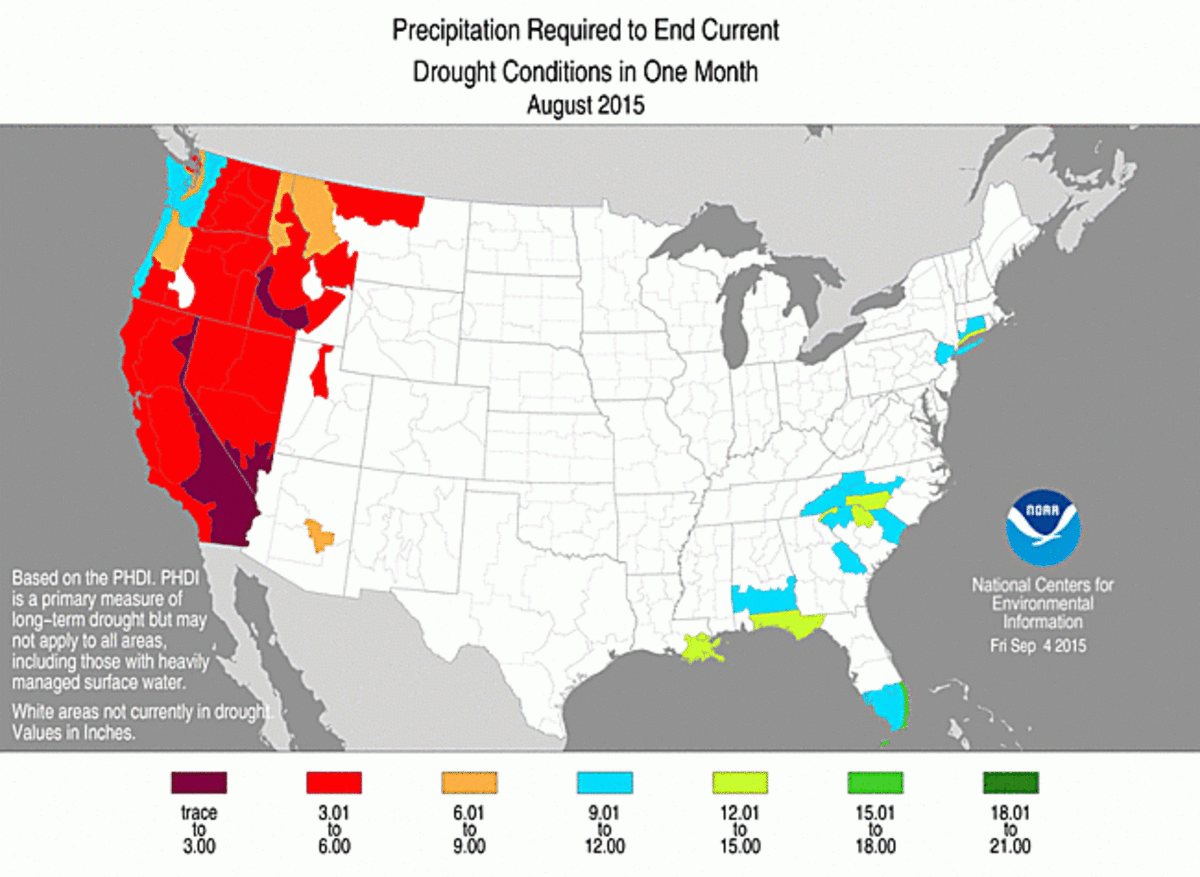
Drought is a difficult phenomenon to define and measure. It’s hard to know when a drought begins or ends. During the last 100 years, scientists around the world have devised specialized drought definitions and indices for specific applications, but they still struggled with these concepts for much of the 20th century. In 1965, meteorologist Wayne C. Palmer devised a drought index that put us on the path to a better understanding of drought and a more universal way of measuring it.
What Is the Palmer Drought Index?
The Palmer Drought Index incorporates the ideas of water supply and water demand, includes a component to estimate soil moisture, and puts it all together in a water budget methodology. Scientists then use precipitation to calculate the water supply component and temperature to estimate the water demand component. The Palmer model feeds these values in and produces a standardized index that is negative for drought and positive for wet spells. Values less than −0.5 represent drought and values less than −2.0 represent moderate drought.
Scientists then use these values to generate three different indices that describe various aspects of drought: the Palmer Drought Severity Index (PDSI), Palmer Hydrological Drought Index (PHDI), and Palmer Z Index. If precipitation is less than normal and things dry out, the Palmer indices get more negative (intensifying drought). If temperatures are hotter than what is normal, evaporation increases and this can contribute to an intensifying drought. If precipitation is above normal, conditions get wetter and drought ameliorates (reduces in intensity).
How Do Scientists Calculate the Precipitation Required to End Drought?
Scientists can reverse the equations that calculate the PHDI to give us an idea of how much precipitation is needed to end drought or ameliorate a given drought intensity. When the PHDI reaches a value equal to or greater than −0.5, drought ends. And, when the PHDI reaches a value greater than or equal to −2.0, a severe or extreme drought ameliorates. The amount of precipitation needed to end or ameliorate a drought depends on how many months that precipitation falls, how severe the drought is (what the starting value of the PHDI is), what the local climatology of the region is, and the time of year.
What Can These Maps Tell Us?

Our web map product shows the precipitation required to end or ameliorate drought for several PHDI drought intensities, for several durations ranging from one to six months, and for different months of the year. Locations need more precipitation to end or ameliorate drought during the wet season than during the dry season due to the way the Palmer index works. The maps show ranges of precipitation for each climate division for ease of plotting. You can find specific values in the data files for the current conditions.
The maps also show the probability of ending or ameliorating a drought. This is essentially the probability of getting the required precipitation based on the historical record of precipitation. If the Palmer model says that a location needs a lot of precipitation to end its drought, but that amount of precipitation has rarely fallen throughout the historical record, then the probability of the drought ending there will be very low. If the required amount of precipitation has fallen often in the past, then the probability will be high.
Remember, this tool only tells you how much precipitation a location needs to get the PHDI index to a certain value based on the model’s equations. It does not tell you how much precipitation is needed to refill a reservoir, restore groundwater to normal, or bring an ecosystem back to normality. It also does not incorporate snowpack into its calculations, and mountain snowpack is a crucial part of hydrology in the U.S. West. Overall, you should use the Palmer drought tool in conjunction with other tools to get a more comprehensive picture of what an area needs to end or ameliorate drought conditions.




